From seats of power to tourism powerhouses
These cities once ruled their respective worlds, and their importance can still be felt at every turn, with hotels fit for a king or queen.

Capital cities are often their countries’ main visitor drawcard, pushing to the margins other places that are just as worthy and once fulfilled administrative roles as seats of power . Until the likes of war and politics intervened, these cities ruled their respective worlds, and their importance can still be felt at every turn. They hold enduring appeal for tourists, with multiple attractions plus hotels fit for a king or queen.
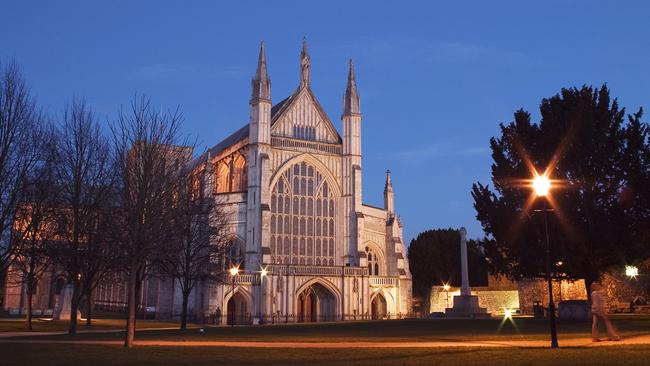
WINCHESTER, ENGLAND
Winchester’s status came from the spread of Christianity through southern England, with the Bishop of Wessex establishing his seat at the cathedral in 676. Over the next few centuries, various rulers made it their capital, from Alfred the Great and the Danish king Canute to William the conquering Norman, who was crowned here. But William soon realised London, 100km to the north, was a better option. Some historians look at Winchester and see Camelot; on a wall in the castle is a round tabletop, although it’s been dated to the 13th century when Edward I commissioned an imitation of the one he’d heard about. If you’re feeling Austen-tatious, the author often stayed at her brother’s home, Chawton House (open daily). She’s buried at the cathedral, and a memorable latter-day Mr Darcy, Colin Firth, was born here.
MUST-SEE
The “new” Winchester Cathedral (consecrated in 1093), at 169m the longest in England. The Harold Hillier Gardens and Arboretum, with about 42,000 plants.
STAY Lainston House;
exclusive.co.uk/lainston-house
Should child-free zones be the norm on all flights?
Despite Qantas debacle, travellers have more choice
Glamping among the Mudgee gums is pitch perfect
Camilla Franks reveals the Amalfi’s best-kept secret
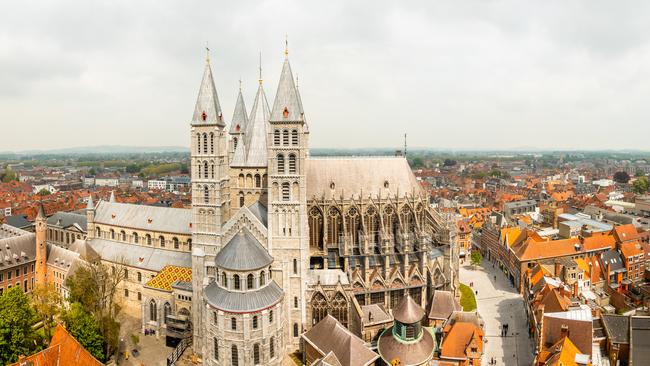
TOURNAI, BELGIUM
Tournai was once the most important city in western Europe, certainly in the Frankish realm, and effectively France’s first capital. That lasted 50 years until 486, when King Clovis, with a growing empire, preferred the more central Paris. Tournai became an important centre for textiles, particularly tapestry. It’s been under French, Spanish, Austrian and Dutch regimes, and since 1830 Belgian. Located 90km southwest of Brussels, it’s dripping with Romanesque, Gothic and Art Nouveau sites, and a pair of 12th-century buildings are purportedly the oldest private houses in Europe. Tournai has some favourite flavours, with rabbit highly regarded, and the sweet treat is gateau Clovis, a frangipane cake filled with apricot and pineapple.
MUST-SEE
TAMAT, the tapestry and fabrics museum. Being Belgium, don’t miss the breweries, especially Dupont and De Ranke.
STAY Oniro; onirotournai.com
BONN, GERMANY
Bonn’s modesty clinched the vote for capital of West Germany; those who saw an eventual reunification headquartered in Berlin would have had a harder time wresting it back from a strong city such as Frankfurt. Not that Bonn lacks gravitas. Founded by the Romans, the archbishop of Cologne used it as his capital in the 13th century, and it’s always been a fashionable residential city. It is lined with elegant avenues, such as the one up to Poppelsdorfer Palace and its botanical gardens, among Germany’s oldest and holding the world’s largest water lilies. Bonn has given us not just Beethoven but Gummy Bears; Haribo confectionery began here in 1920, and there’s a huge factory outlet in the old diplomatic quarter.
MUST-SEE
Tour 22 Beethoven spots around the city. Stroll the Rhine promenade at Bad Godesberg.
STAY Kameha Grand Bonn; kamehabonn.de/en
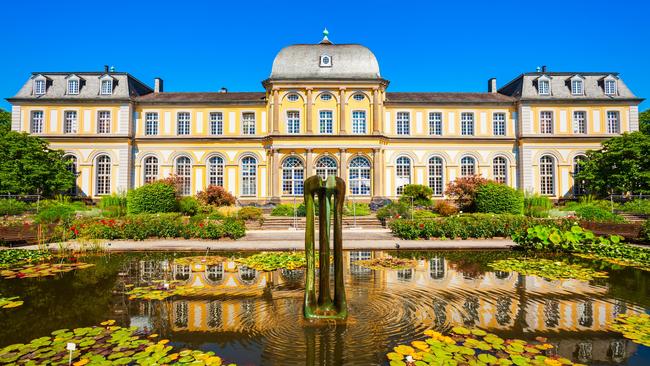
LUCCA, ITALY
Throw a dart at a map of Italy and you’ll hit a former capital in this motley collection of old kingdoms, duchies and fiefdoms. Lucca, a walled city 70km west of Florence, ruled an eponymous republic for 500 years until annexed by France in 1805. Later it re-emerged as a duchy before being subsumed into greater Tuscany in 1847. Lucca’s protective wall is now a promenade, the 4.2km Passeggiata delle Mura Urbane, from which you can view a wonderfully preserved Renaissance town, dominated by the duke’s palace, the 14th-century Guinigi Tower (crowned by a stand of oak trees) and ornate churches. Unique to Lucca are dishes such as matuffi (polenta with ragu and mushrooms) and buccellato di lucca, a sweet bread flavoured with raisins and aniseed.
MUST-SEES
The Puccini festival every July-August honouring its locally born operatic hero. The terraced water gardens of Villa Garzoni.
STAY Hotel Villa Casanova; villacasanova-lucca.it
ST PETERSBURG, RUSSIA
A city lauded as “almost too beautiful”, St Petersburg was founded in 1703 by Peter the Great, who wanted not just a base for his navy but a canal city in the image of Venice and Amsterdam. It was the imperial capital for most of the next two centuries, but the Bolsheviks weren’t going to continue with that, preferring Moscow, a more defendable city deeper inside the country. Congenial St Petersburg remains more European than Moscow, and with 200 museums, 80 theatres and 50 galleries, it’s unofficially Russia’s cultural capital. Despite war damage, most of its 18th and 19th-century architecture has been preserved, and while its amazing churches and palaces can’t be ignored, the Stalinist edifices along Moskovsky Prospekt have their own allure. The network of waterways makes the city ideal for boat tours. All of which is currently a pipe dream, given the Australian Government’s advice level for Russia is “do not travel”.
MUST-SEE
The Winter Palace, former residence of the tsars and dripping with European art treasures. Peterhof country estate, which Peter wanted as a rival to Versailles.
STAY The Official State Hermitage Hotel;
thestatehotel.saintpetersburg-hotels.com/en

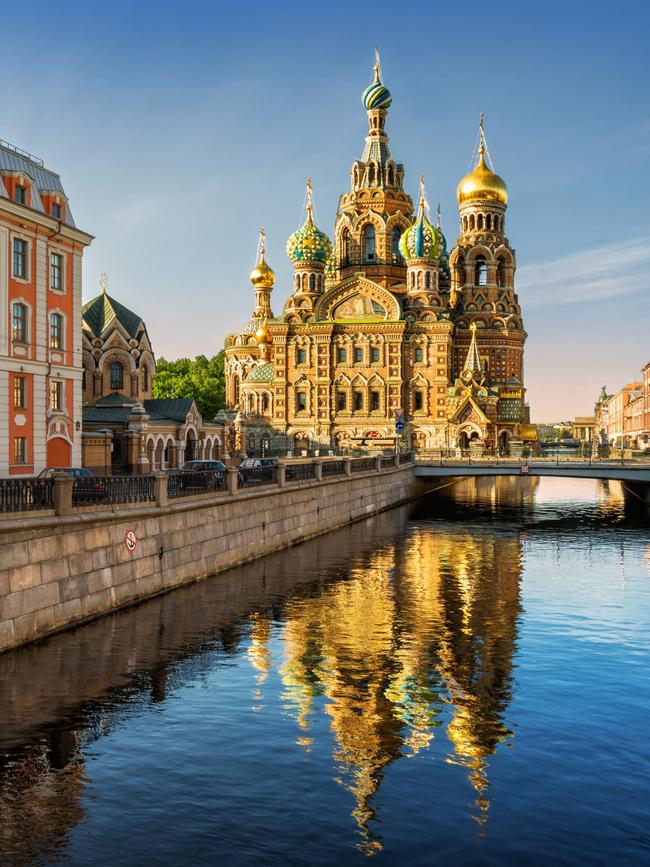
FEZ, MOROCCO
A four-time Morocco capital over 1300 years, Fez’s prime era was 1244-1554, when many of the grand buildings admired to this day were created. Every time it lost out to other pretenders, new dynasties would restore Fez’s status. In 1912, Morocco’s French conquerors preferred Rabat, especially given riots in Fez over the sultan’s sell-out. But it’s still regarded as the country’s cultural and spiritual centre. The medina, one of the largest and oldest in the world, is a maze, so take a guide, a compass or both. Old areas such as Fes el-Bali and Fez el-Jdid sit in contrast to the Ville Nouvelle (New City), established by the French early last century. Fez is surrounded by olive groves and orchards.
MUST-SEE
The tanneries with their open-top stone wells full of vivid dyes. Dar Batha palace, now an art museum with 6000 exhibits (currently undergoing renovations).
visitmorocco.com/en/travel/fez
STAY Riad Fes; riadfes.com

THEBES, EGYPT
Thebes is the ancient of ancients. It’s in the Bible, Homer’s Iliad and now many a guide book, as an open-air museum of dazzling ruins across 400sq km. Its influence came from its location on the Nile 600km south of Cairo, intersecting the caravan route from the Red Sea to the Sahara. When the rival kingdoms of Upper and Lower Egypt united 4000 years ago, Thebes became the capital. Around 663 BC, the Assyrians plundered the city, and the next dynasty sited its capital at Sais, near Alexandria. Thebes’ relics are scattered around the modern city of Luxor, and it’s stylish to arrive by cruise boat.
MUST-SEE
Karnak, a maze of temple ruins from up to 5000 years ago. Ramesseum, the funerary temple of Ramses II.
STAY Sofitel Winter Palace Luxor; all.accor.com
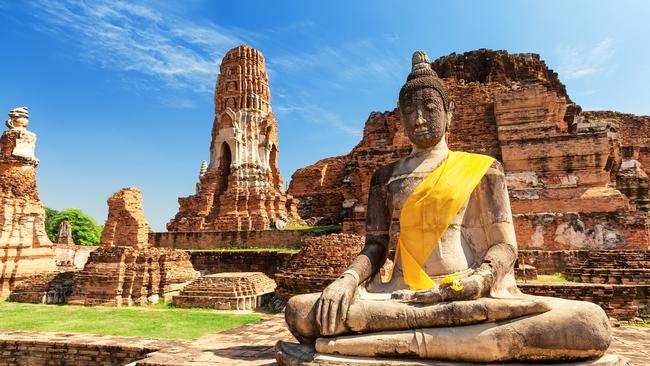
AYUTTHAYA, THAILAND
Founded around 1350, Ayutthaya thrived as the capital of an eponymous kingdom extending from what is today Thailand into Myanmar, Laos and Cambodia. But over time its society faltered and in 1768 the Burmese conquered and burnt the city. The Siamese regrouped and took back the southern city of Thonburi, which became the capital before a new king, Rama I, moved it across the river to Bangkok in 1782. Ayutthaya was a well-planned city of grid roads, canals and moats, and because it shared diplomatic and trade ties with the likes of China and France, the foreign influences can still be seen in the ruins amid the modern town, which feels like much of Thailand, with houseboats and shop boats on the waterways.
MUST-SEE
Wat Phra Si Sanphet, a monastery that once held a Buddha covered in 170kg of gold. The treasure-laden Chao Sam Phraya National Museum.
STAY Sala Ayutthaya; salahospitality.com
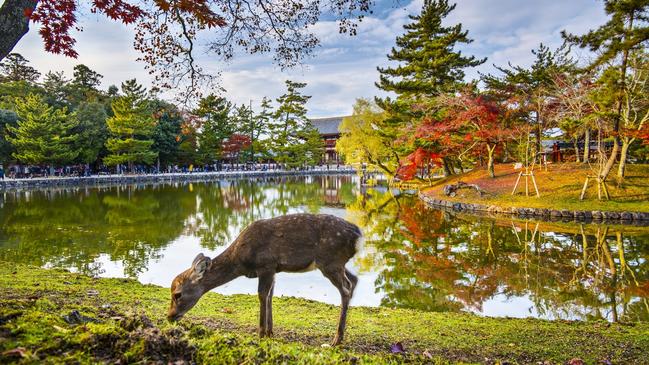
NARA, JAPAN
The national capital was a loose concept in old Japan, beholden to the whim of the ruler, and permanent status wasn’t conferred until Empress Genmei settled in Nara in 708. Yet, in 784, Emperor Kanmu liked the better water transport options at Nagaokakyo 40km north, in what is now Kyoto, leaving Nara as it is today, compact and charming. In temple-heavy Japan, Nara’s are something else, befitting a city where the church was just as influential as the emperor. The main temple, Todai-ji, one of the largest wooden buildings in the world, houses a 15m bronze Buddha. When it gets crowded, escape to the house museums south of the Sanjodori pedestrian street. Among Nara’s many festivals, Kaerutobi (frog-hopping) in early July is unique.
MUST-SEE
Deer, once regarded as sacred, roaming free in Nara Park. Visit a sake brewery, Nara being the home of “refined sake”.
STAY Nara Hotel; narahotel.co.jp/eng
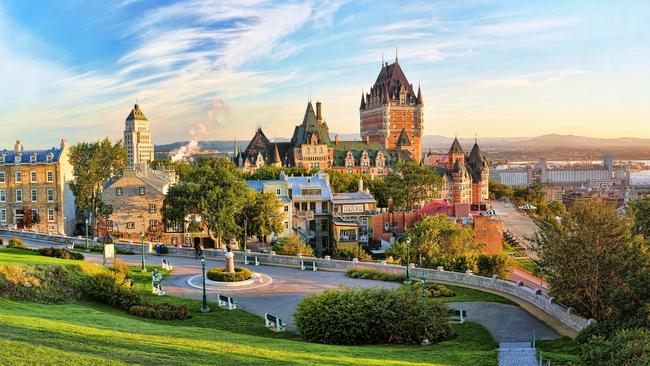
QUEBEC CITY, CANADA
From 1663, Quebec City, the only remaining walled city north of Mexico, was capital of various entities: New France, Quebec Province, Lower Canada and all of British North America. Yet in 1857, Queen Victoria chose Ottawa as capital of the new nation. It was smaller, easier to defend, and prudently on the border of the two main provinces, English-speaking Ontario and Francophone Quebec. And while it’s no Paris, QC feels rather French, especially in its twin World Heritage enclaves, the Upper and Lower Town, while the Ile d’Orleans in the St Lawrence River is a step back into the 1700s. To experience the province’s obsession with apples, visit the modern Le Grand Marche.
MUST-SEE
Notre-Dame de Quebec Basilica, the first Catholic cathedral in North America. The fortified Citadelle de Quebec, a good launching place for a walk along the top of the city wall.
STAY Fairmont Le Chateau Frontenac;
fairmont.com/frontenac-quebec

PHILADELPHIA, US
America’s government in the first 25 years of the republic was a roadshow; its capital floating between the likes of Baltimore, New York and Princeton. Philadelphia served six times until 1800 when Washington DC was completed, the Constitution having stipulated that the permanent capital not be part of any one state. Founded by the Quakers in 1682, Philly is synonymous with freedom, culture and diversity, with Irish, Italian, Polish and Puerto Rican populations second only to New York’s. Its African American Museum (affiliated with the Smithsonian) was the first such institution in a major US city. And it’s renowned for the largest public art and mural displays in America.
MUST-SEE
Independence National Historic Park, hosting 60-plus sites critical to the founding of the republic. The Barnes Foundation, a private collection of Impressionist and Post-Impressionist art.
STAY Four Seasons Hotel Philadelphia;
fourseasons.com/philadelphia
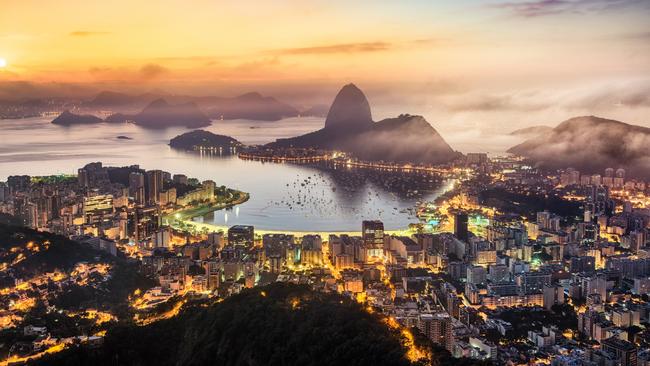
RIO DE JANEIRO, BRAZIL
Fun fact: Rio was the capital of Portugal. Founded by the Portuguese, it was Brazil’s capital when, in 1808, Queen Maria elevated Brazil to kingdom status and moved her court there. Rio ruled both for 17 years, remaining Brazil’s capital until 1960, when Brasilia, a newly built and politically neutral city, took over. UNESCO says Rio’s urban landscape has been “shaped by a creative fusion between nature and culture”, one that has provided inspiration for many forms of art, literature, poetry and music. The city throbs, whether in the bars, on the feted beaches or even on the streets, especially during Carnival (usually late February).
MUST-SEES
Tijuca National Park, supposedly the world’s largest urban forest, home to 30 waterfalls and topped by Christ the Redeemer. A football match at Maracana stadium, a sporting experience like no other.
STAY Copacabana Palace A Belmond Hotel;
belmond.com

To join the conversation, please log in. Don't have an account? Register
Join the conversation, you are commenting as Logout